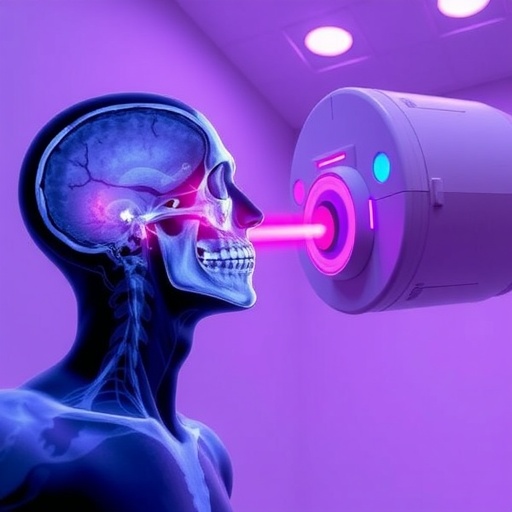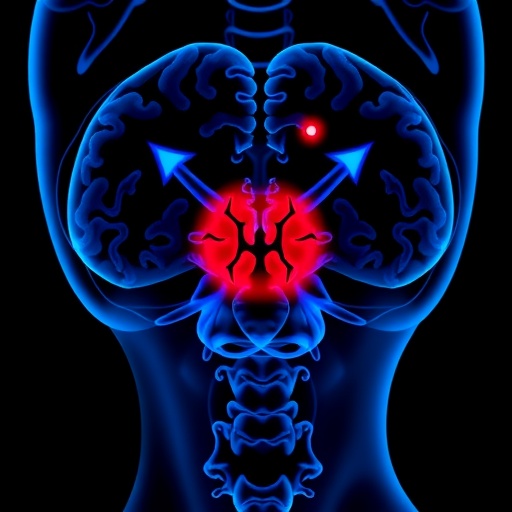In a groundbreaking clinical trial funded by Cancer Research UK, intensity-modulated radiotherapy (IMRT) has been demonstrated to be as effective as proton beam therapy (PBT) in the treatment of head and neck cancer. The findings of the TORPEdO study, which were presented at the American Society of Radiation Oncology (ASTRO) Annual Meeting in San Francisco, challenge the prevailing assumption that proton therapy offers superior outcomes and fewer side effects for most patients in this category. This research is poised to reshape treatment protocols and accessibility for head and neck cancer patients globally.
Head and neck cancers represent a diverse group of malignancies involving the oral cavity, pharynx, larynx, and other anatomical sites. Radiotherapy plays a pivotal role in their management, often in combination with chemotherapy agents like cisplatin. Both IMRT and PBT are highly targeted radiation treatments capable of delivering precise doses that conform to the complex geometry of tumors, minimizing collateral damage to adjacent healthy tissues. However, the mechanisms underlying these two modalities differ fundamentally, influencing treatment planning and delivery.
Proton beam therapy utilizes charged particles called protons, which deposit energy at a specific depth—known as the Bragg peak—allowing for maximal tumor irradiation while sparing downstream tissues. This physical advantage theoretically reduces exposure of surrounding normal tissues to ionizing radiation, potentially minimizing toxicity. Conversely, IMRT employs sophisticated computer algorithms and linear accelerators (LINACs) to shape multiple photon beams that modulate intensity to the tumor’s shape. Although IMRT photons exit the body after delivering dose, advancements have substantially enhanced its conformality and precision.
Despite the theoretical benefits of PBT, widespread adoption has been limited due to its cost, infrastructure requirements, and availability. In the UK, PBT is currently only routinely available at specialized centers such as The Christie NHS Foundation Trust in Manchester and University College London Hospital. It is primarily reserved for highly sensitive cases like pediatric cancers or tumors near critical organs, where reducing radiation-induced damage has lasting implications. By contrast, IMRT is more widely accessible, with approximately 340 LINAC machines in England, though many require modernization to deliver cutting-edge treatments.
The TORPEdO trial, conducted across multiple centers in the UK, randomized 205 patients diagnosed with head and neck cancer to receive either PBT or IMRT between 2020 and 2023. After one year of follow-up, comprehensive assessments revealed no statistically significant differences between the two groups in key clinical outcomes. Measures of toxicity—including taste alteration, difficulties with chewing and swallowing, speech impairment, salivary gland function, and changes in post-treatment appearance—were similar irrespective of the radiation modality.
These results underscore the importance of delivering high-quality radiation therapy, regardless of modality. According to Professor David Thomson, clinical lead for head and neck cancer at The Christie NHS Foundation Trust and chief investigator of the trial, the findings emphasize that both PBT and IMRT, when performed expertly, yield comparable survival and quality-of-life outcomes. He further highlighted the practical implications, stating that the greater availability of IMRT equipment ensures broader patient access without compromising treatment efficacy.
The trial outcomes also hold significance for healthcare systems’ resource allocation strategies. Dr. Emma Hall, a professor of oncology trials at the Institute of Cancer Research in London and co-lead of TORPEdO, emphasized that widespread access to high-quality IMRT necessitates substantial investment in modern LINAC machines. The findings suggest that upgrading existing radiotherapy infrastructure might present a more cost-effective path to improved patient outcomes compared to the expansion of proton therapy facilities.
Patient perspectives bring a human dimension to these clinical insights. Tex Leece, a 52-year-old participant who underwent standard IMRT treatment through TORPEdO for oropharyngeal cancer, shares his story of recovery and active life post-treatment. His experience validates the trial’s conclusions and illustrates the importance of clinical research in enhancing future therapeutic options while maintaining hope and optimism among patients.
The study’s implications extend to ongoing and future research directions. While PBT did not demonstrate superiority in this cohort, its potential benefits in other tumor types or in combination with emerging therapies such as immunotherapy or molecular targeted drugs remain under investigation. These prospective studies aim to delineate patient subgroups who might derive enhanced therapeutic benefit from proton therapy, supporting the principle of personalized medicine.
Crucially, the TORPEdO trial also highlights broader challenges facing cancer care delivery. The UK government has recently pledged funding to procure new LINAC machines, a step welcomed by researchers and clinicians. However, addressing persistent staffing shortages in radiology and ensuring sustained investment in technology are essential to meet the rising incidence of cancer diagnoses projected for the coming decades.
Dr. Catherine Elliott, Director of Research at Cancer Research UK, stresses that modern radiotherapy techniques like IMRT and PBT represent a leap forward in cancer treatment precision and efficacy. Yet, equitable access requires addressing systemic constraints to allow every patient to receive optimal care. These findings create a compelling case for sustained policy focus and resource commitment within the National Cancer Plan for England, aligning clinical innovation with healthcare delivery capacity.
In summary, the TORPEdO clinical trial provides robust evidence that intensity-modulated radiotherapy matches proton beam therapy in safety and effectiveness for most people with head and neck cancer. By reaffirming the value of widely accessible advanced radiotherapy, this research advocates for practical, evidence-based approaches that optimize outcomes, minimize harm, and expand treatment access across healthcare systems.
Subject of Research: People
Article Title: Intensity-Modulated Radiotherapy Equals Proton Beam Therapy in Head and Neck Cancer Treatment, Landmark Trial Finds
News Publication Date: Not provided
Web References: Not specified
Keywords: Cancer treatments
Tags: American Society of Radiation Oncology conferencecancer treatment advancementscharged particle therapy benefitschemotherapy in head and neck cancerglobal cancer treatment accessibilityintensity-modulated radiotherapy effectivenessminimizing side effects in cancer therapyprecision radiation treatmentsProton beam therapy for head and neck cancerradiotherapy vs proton therapyTORPEdO study findingstreatment protocols for malignancies





